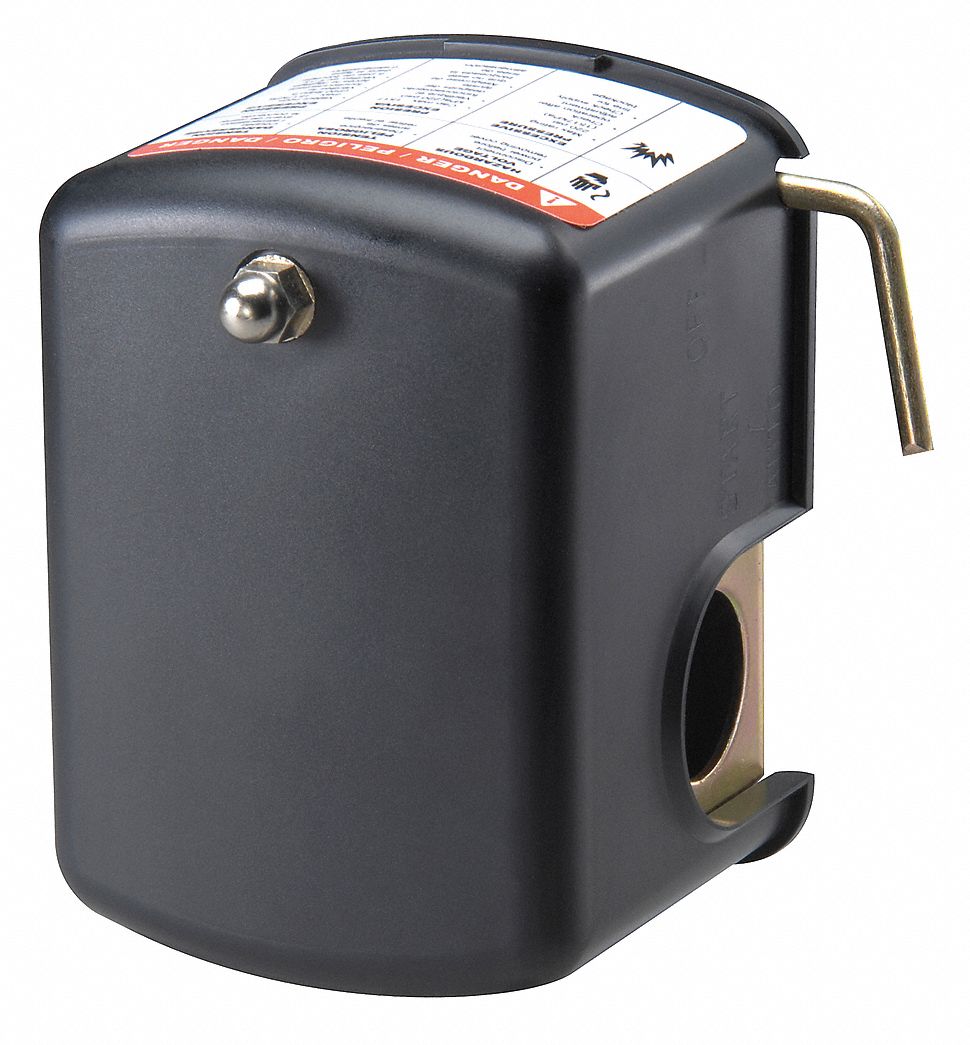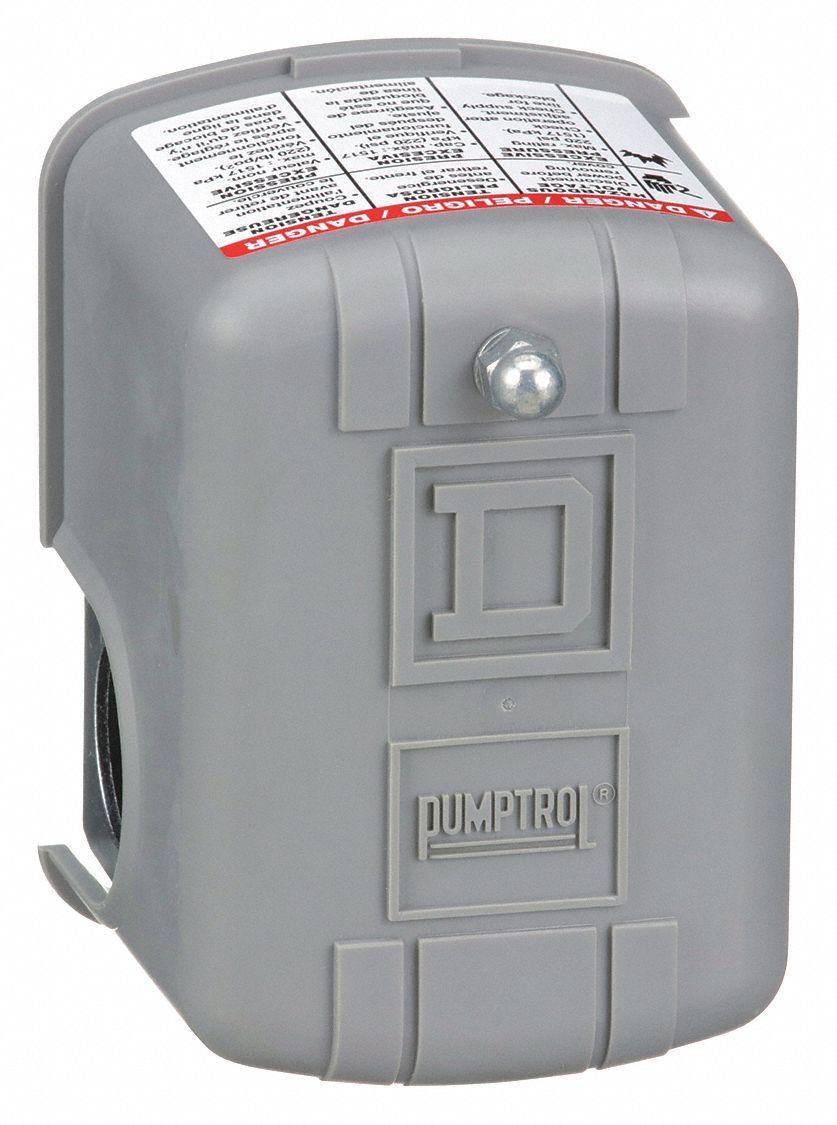Understanding Your Water Pump's Pressure Control

Ever wondered how your water pump knows when to turn on and off? It's not magic, but a clever little device called a pressure switch. This unassuming component plays a crucial role in maintaining consistent water pressure throughout your home or property. Let's delve into the world of water pump pressure switches and explore their function, benefits, and potential issues.
Imagine this: you turn on the tap, and water flows smoothly, just as you expect. Behind the scenes, a pressure switch is orchestrating this seamless experience. It senses the drop in water pressure as you open the tap and signals the pump to kick into action. Once you close the tap, the pressure rises, and the switch tells the pump to rest. This automatic control ensures you always have water on demand without constantly running the pump.
The pressure switch for water pump operation is an ingenious piece of engineering. It's a relatively simple mechanism that relies on a diaphragm and a set of electrical contacts. When water pressure drops below a preset level, the diaphragm flexes, closing the electrical contacts and activating the pump. Conversely, as pressure rises, the diaphragm returns to its original position, opening the contacts and stopping the pump. This continuous cycle maintains a consistent water supply.
The origins of the pressure switch can be traced back to the development of automated pumping systems. Before pressure switches, pumps were often manually controlled, requiring someone to turn them on and off as needed. The introduction of pressure-activated switches was a significant advancement, allowing for automatic and more efficient water management.
A malfunctioning pressure switch can lead to various issues, including erratic water pressure, short cycling (frequent on-off cycles of the pump), or even pump failure. Understanding how these switches work and recognizing potential problems is essential for maintaining a reliable water supply.
The pressure switch mechanism itself is fairly straightforward. Inside the switch, a diaphragm senses changes in water pressure. This diaphragm is connected to a set of electrical contacts. When the pressure drops below the cut-in pressure (the pressure at which the pump starts), the diaphragm moves, closing the contacts and starting the pump. When the pressure reaches the cut-out pressure (the pressure at which the pump stops), the diaphragm moves back, opening the contacts and stopping the pump. This cycle ensures consistent water pressure delivery.
Three key benefits of having a correctly functioning pressure switch are consistent water pressure, reduced pump wear and tear, and energy savings. Consistent water pressure ensures a comfortable and reliable water supply, avoiding fluctuations that can be annoying during showers or other water usage. Reduced pump wear and tear results from the pump only running when needed, extending its lifespan. Finally, energy savings are achieved as the pump isn't constantly running, consuming less electricity.
Troubleshooting a pressure switch involves checking for common issues such as a faulty pressure switch itself, leaks in the plumbing system, or incorrect pressure settings. A pressure gauge can be helpful in diagnosing problems. If the pressure isn't reaching the desired cut-out pressure, there might be a leak, while erratic pressure fluctuations might indicate a faulty switch.
Advantages and Disadvantages of Pressure Switches
| Advantages | Disadvantages |
|---|---|
| Automated pump control | Potential for malfunction |
| Consistent water pressure | Requires periodic checks |
| Extended pump lifespan | Can be sensitive to pressure fluctuations |
Best Practices for Implementing a Pressure Switch:
1. Choose the correct switch for your pump and system requirements.
2. Ensure proper installation and connection to the water line.
3. Set the cut-in and cut-out pressures appropriately for your needs.
4. Regularly check the pressure switch and gauge for proper operation.
5. Consider installing a pressure tank to reduce pump cycling.
Frequently Asked Questions about Pressure Switches:
1. What is a pressure switch? A pressure switch controls a water pump based on water pressure changes.
2. How does a pressure switch work? It uses a diaphragm to sense pressure and activate electrical contacts to control the pump.
3. Why is my pump constantly cycling? This could indicate a faulty switch, a leak, or incorrect pressure settings.
4. How do I adjust the pressure settings? Consult your pump's manual or a qualified technician.
5. How often should I check my pressure switch? Periodic checks, at least annually, are recommended.
6. Can I replace a pressure switch myself? Yes, but if you're unsure, consult a professional.
7. What are the signs of a failing pressure switch? Erratic pressure, short cycling, or no water flow are common signs.
8. Where can I buy a replacement pressure switch? Hardware stores or online retailers typically carry them.
Tips and Tricks for Pressure Switch Maintenance:
Regularly check the pressure gauge reading to ensure it's within the desired range.
Drain your pressure tank periodically to remove sediment buildup.
Inspect the pressure switch for signs of wear or damage.
In conclusion, the pressure switch is a vital component of any water pump system, ensuring a smooth and efficient water supply. Understanding its operation, benefits, and potential problems can empower you to maintain a reliable water system for years to come. From turning on your faucet to watering your garden, the pressure switch silently works behind the scenes, delivering water on demand. Regular maintenance and understanding its function will not only ensure a consistent water supply but also extend the life of your pump and minimize potential issues. Take the time to learn about your pressure switch—it's a small component with a big impact on your water supply's performance. If you have any concerns about your water pump's pressure switch, consult a qualified plumber or well pump technician.
Khao chamao khao wong national park a thai rainforest retreat
Big bang cannons a comprehensive guide
Monster energy tea lemonade fusion a refreshing kick












